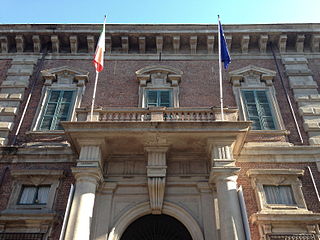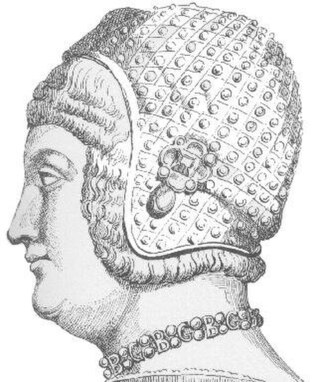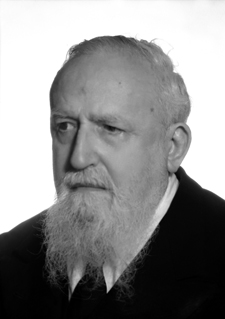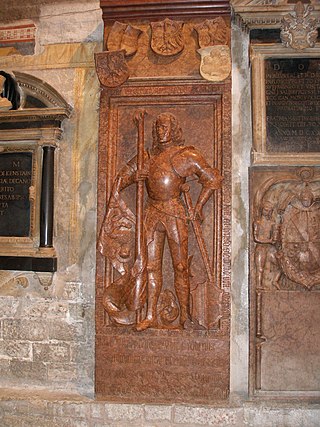
Piero di Lorenzo de' Medici, called Piero the Fatuous or Piero the Unfortunate, was the lord of Florence from 1492 until his exile in 1494.

Ludovico Maria Sforza, also known as Ludovico il Moro. "Arbiter of Italy", according to the expression used by Guicciardini, was an Italian Renaissance nobleman who ruled as Duke of Milan from 1494 to 1499.

Galeazzo Maria Sforza was the fifth Duke of Milan from 1466 until his assassination a decade later. He was notorious for being lustful, cruel, and tyrannical.

Giovanni Botero was an Italian thinker, priest, poet, and diplomat, author of Della ragion di Stato , in ten chapters, printed in Venice in 1589, and of Universal Relations,, addressing the world geography and ethnography. With his emphasis that the wealth of cities was caused by adding value to raw materials, Botero may be considered the ancestor of both Mercantilism and Cameralism.

The First Italian War, sometimes referred to as the Italian War of 1494 or Charles VIII's Italian War, was the opening phase of the Italian Wars. The war pitted Charles VIII of France, who had initial Milanese aid, against the Holy Roman Empire, Spain and an alliance of Italian powers led by Pope Alexander VI, known as the League of Venice.

The Italian Wars of 1499-1504 are divided into two connected, but distinct phases: the Second Italian War (1499–1501), sometimes known as Louis XII's Italian War, and the Third Italian War (1502-1504) or War over Naples. The first phase was fought for control of the Duchy of Milan by an alliance of Louis XII of France and the Republic of Venice against Ludovico Sforza, the second between Louis and Ferdinand II of Aragon for possession of the Kingdom of Naples.

Beatrice d'Este, was Duchess of Bari and Milan by marriage to Ludovico Sforza. She was one of the most important personalities of the time and, despite her short life, she was a major player in Italian politics. A woman of culture, an important patron, a leader in fashion: alongside her illustrious husband she made Milan one of the greatest capitals of the European Renaissance. With her own determination and bellicose nature, she was the soul of the Milanese resistance against the enemy French during the first of the Italian Wars, when her intervention was able to repel the threats of the Duke of Orléans, who was on the verge of conquering Milan.

Palazzo Brera or Palazzo di Brera is a monumental palace in Milan, in Lombardy in northern Italy. It was a Jesuit college for two hundred years. It now houses several cultural institutions including the Accademia di Brera, the art academy of the city, and its gallery, the Pinacoteca di Brera; the Orto Botanico di Brera, a botanical garden; an observatory, the Osservatorio Astronomico di Brera; the Istituto Lombardo Accademia di Scienze e Lettere, a learned society; and an important library, the Biblioteca di Brera.

Università Cattolica del Sacro Cuore, known as UCSC or UNICATT or simply Cattolica, is an Italian private research university founded in 1921. Cattolica, with its five affiliated campuses, is the largest private university in Europe and the largest Catholic University in the world. Its main campus is located in Milan, Italy, with satellite campuses in Brescia, Piacenza, Cremona and Rome.

Bona of Savoy, Duchess of Milan was Duchess of Milan as the second spouse of Galeazzo Maria Sforza, Duke of Milan. She served as regent of Milan during the minority of her son 1476–1481.

Francesco (Cicco) Simonetta was an Italian Renaissance statesman who composed an early treatise on cryptography.

Gaetano De Sanctis was an Italian ancient historian, classicist and lifetime senator (1950-1957). As the collection of his 'scritti minori' illustrates, his scope of scholarship ranged from Homer down to the Byzantine Empire. He was the influential teacher of Arnaldo Momigliano. His work 'Storia dei Romani' could be considered a monumental work.

Mario Tronti is an Italian philosopher and politician, considered one of the founders of the theory of operaismo in the 1960s.

Galeazzo da Sanseverino, known as the son of Fortuna, was an Italian-French condottiere and Grand Écuyer de France; Marquis of Bobbio, Count of Caiazzo, Castel San Giovanni, Val Tidone and Voghera. He was first the favorite of Ludovico il Moro and Beatrice d'Este, then of Louis XII and Francis I of France, as well as a sworn enemy of Gian Giacomo Trivulzio.
On the other hand the Duke of Milan
called and gave the general cane
to Maria Galeazo, and captain
did it of his people on the saddle,
who riding then from hand to hand,
with the banner in the wind of the snake,
honor and glory of Lombardy,
with many great gentlemen in company.

Roberto Sanseverino d'Aragona was an Italian condottiero, count of Colorno from 1458 to 1477 and count of Caiazzo from 1460 until his death in 1487. Highly esteemed man of arms, veteran of numerous battles, he was one of the greatest leaders of the Italian Renaissance.

Santa Maria in Brera was a church in Milan, in Lombardy in northern Italy. It was built by the Humiliati between 1180 and 1229, given a marble façade and Gothic portal by Giovanni di Balduccio in the fourteenth century, and deconsecrated and partly demolished under Napoleonic rule in the early nineteenth century. The Napoleonic rooms of the Pinacoteca di Brera occupy the upper floor of what was the nave.
Francesco Fiorentino was an Italian philosopher and historiographer.
Nino Valeri was an Italian historian.

Ludovico Settala was an Italian physician who lived during the Renaissance.
The siege of Novara was a battle that took place in the summer and autumn of 1495 during the Italian War of 1494–1495. While king Charles VIII of France was retreating to the north after facing rebellions in the recently conquered Kingdom of Naples, and managed to escape the destruction of his army at the Battle of Fornovo, his cousin and future king Louis d'Orleans opened a second front by attacking the Duchy of Milan and occupying the city of Novara. In an effort to retrieve it, the Milanese army and their League of Venice allies besieged Novara for three months and fourteen days. Suffering from severe starvation and disease, the French lost about 2000 soldiers before Louis had to surrender and withdraw.


















